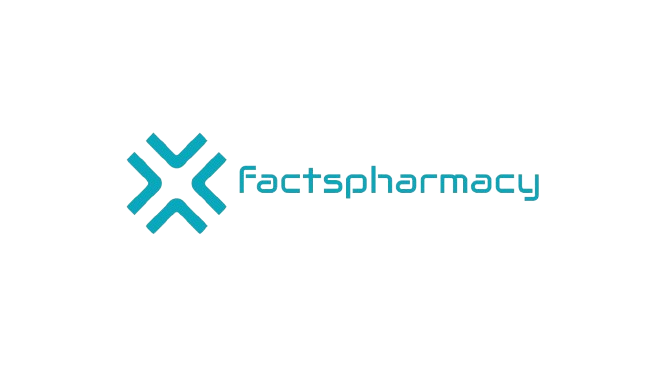As we all know the increasing population also leads to an increase in the many health problems worldwide. From the COVID-19 pandemic, we have come to see the importance of pharmacists all over the world, in the same way, Canada is a great opportunity for those students who want to build their careers as a professional pharmacist, here we will discuss how to be a Pharmacist in Canada.
Scope
Pharmacy plays a variety of roles. There are more than 10,000 pharmacies spread throughout the country. The country has more than 42,000 registered pharmacists and they play a different and important role in keeping the country healthy. 70% of them work in the community pharmacy, 15% give their services in hospitals, and the remaining, in other key areas, such as education, research, industry, and other government bodies.
Standard Education.
Over the years, the level of education in Canada has invariably grown. Now countries standing head-to-head with other countries have standard education systems. Nowadays Canada is well known for its outstanding research in pharmacy.
Increasing Market Size
With the growth of the disease in the country, the need for pharmacists is also increasing daily. In Canada, 11% of the total GDP is invested in healthcare, leading to an increase in registered pharmacists.
Increased Pharmacist’s Demand
With the increased health problems, the country is filled with the need for new pharmacists. According to the Canadian Pharmacists Association country needs more well-trained pharmacists.
Scholarship Plans.
A large number of scholarship options are available for international students who are interested in studying pharmacy at the top of pharmacy colleges and universities. Scholarship plans range between 2,000 to 20,000 CAD annually
How to be a licensed Pharmacist in Canada; Step-by-step Guide
These are the eligibility criteria
- A bachelor’s degree or a pharma/doctor’s degree from a registered university/college.
- Good in English or French.
- Must clear the National Board examination conducted by the PEBC(Pharmacy Examining Board of Canada) exam portal.
- With working experience in a pharmacy.
- Appear in the Pharmacist evaluation examination or pharmacist qualification exam part 1 and part 2.
When you clear the Pharmacy Technician Qualification Examination PEBC grants you an experience certificate. Certificate proof that the candidate adheres to the National evaluation standard to entry-level knowledge as defined in NAPRC, 2014.
Admission Process
Applicants can have a diploma or bachelor’s degree to start their career in pharmacy. Those who want to study further can be admitted to the MS degree. Some eligibility criteria are mentioned below.
- Applicant must score above 70% in his/her 12th exam.
- The candidate must have Mathematics and two of physics, chemistry, or biology during his/her intermediate.
- Good knowledge of calculus.
- IELTS/TOEFL completion with minimum marks(6.5/80, in most cases)
Document Required
- A completed Application Form
- Transcripts of previous education results must translated into English
- IELTS/TOEFL marks sheet
- Letter of Recommendation(minimum 3)
- Updated CV/resume
- Student visa
- Evidence of funds to cover the fee of up to 1 year.
Expenses of studying Pharmacy in Canada
On behalf of course type, an Indian student can cast something between 8 lakhs to 50 lakhs per year. Mostly diploma courses cost up to 10 lakhs while bachelor’s and master’s courses in Canada are expensive and cost up to 25 lakhs per year
Scholarship
Everyone can’t afford the expenses in a foreign country. So, many top Canadian education institutes provide scholarships to help bright students to complete their education with ease. An organization that provides scholarships.
- Hani Zeini Scholarship
- Harvey Fellowship
- KC Mahindra Scholarships for PG Studies Abroad
- Ontario Graduate Scholarship- Other Master Programs
- Abdul Majid Bader Graduate Scholarship
Top Canadian Pharmacist Exam Courses and University with minimum IELTS/TOEFL Score.

Career & Job Prospects
- Pharmacy Manage (CAD 99,688)
- Staff Pharmacist (CAD 90,821)
- Pharmacist (CAD 92,625)
- Technician (CAD 46,791)
- Pharmacy Technician (CAD 48,781)
- Clinical Pharmacist (CAD 89,700)
International Pharmacy Graduates
IPGs play an important role in the pharmacy profession in Canada. The step-by-step details of becoming a pharmacist in Canada are given below, while some specific processes may differ in some provinces.Firstly an important process is enrolment in NAPRA’s Pharmacists Getway Canada. It provides tools educational resources and information to IPGs for a better understanding of different policies.

Syllabus
PEBC Evaluating Examination
The PEBC (Pharmacy Examining Board of Canada) Evaluating Examination is designed for internationally educated pharmacists who want to practice in Canada. This examination assesses your knowledge of the pharmaceutical sciences and your understanding of the practice of pharmacy in Canada.
Pharmaceutical Sciences
- Pharmacology: Mechanisms of drug action, therapeutic uses, side effects, and contraindications.
- Pharmaceutics: Drug formulations, stability, delivery systems, and compounding.
- Pharmacokinetics: Absorption, distribution, metabolism, and excretion of drugs.
- Medicinal Chemistry: Structure-activity relationships, drug design, and biotransformation.
- Biopharmaceutics: Factors affecting drug absorption, bioavailability, and drug interactions.
Clinical Pharmacy
- Therapeutics: Disease states, treatment options, drug therapy management, and monitoring.
- Patient Care: Pharmaceutical care, medication history, and counseling.
- Pharmacy Practice: Legal and ethical aspects, pharmacy management, and health care systems.
Biomedical Sciences
- Physiology: Systems-based physiology relevant to drug actions.
- Biochemistry: Biochemical processes related to drug actions and disease.
- Microbiology and Immunology: Infectious diseases, antimicrobial therapies, and immunizations.
PEBC Qualifying Examination
The PEBC Qualifying Examination is the next step after passing the PEBC Evaluating Examination for internationally trained pharmacists who want to practice in Canada. It assesses both theoretical knowledge and practical skills, ensuring that candidates meet the standards required for safe and effective pharmacy practice in the country.
The qualifying exam is divided into two parts:
- Part I (Multiple Choice Questions)
- Part II (Objective Structured Clinical Examination, OSCE).
1. Part I: Multiple Choice Questions (MCQs)
- Pharmaceutical Sciences: Advanced understanding of pharmacology, pharmaceutics, medicinal chemistry, etc.
- Clinical Pharmacy: Case-based questions on therapeutic decision-making, patient care, and drug therapy.
- Ethics and Law: Canadian pharmacy laws, ethical decision-making, and professional standards.
2. Part II: Objective Structured Clinical Examination (OSCE)
- Patient Counseling: Communicating effectively with patients regarding medications, dosages, and side effects.
- Clinical Judgment: Analyzing patient scenarios, and making appropriate therapeutic recommendations.
- Interprofessional Communication: Collaborating with other healthcare professionals.
- Problem-Solving: Addressing patient-specific clinical challenges, such as adverse drug reactions or interactions.
Conclusion
Pharmacists can work part-time or full-time in Canada. Several jobs are available in drugstores, hospitals, and independent pharmacies. Canada is offering approximately 12,500 new job options for pharmacy students. The average salary of a pharmacist in Canada is CDA 47.27 per hour, which is nearly 3600 INR. The average salary of a pharmacist is up to 92000 CAD or approximately INR 70lakhs annually. In this way, Canada is a great opportunity for those who want to earn and learn.







